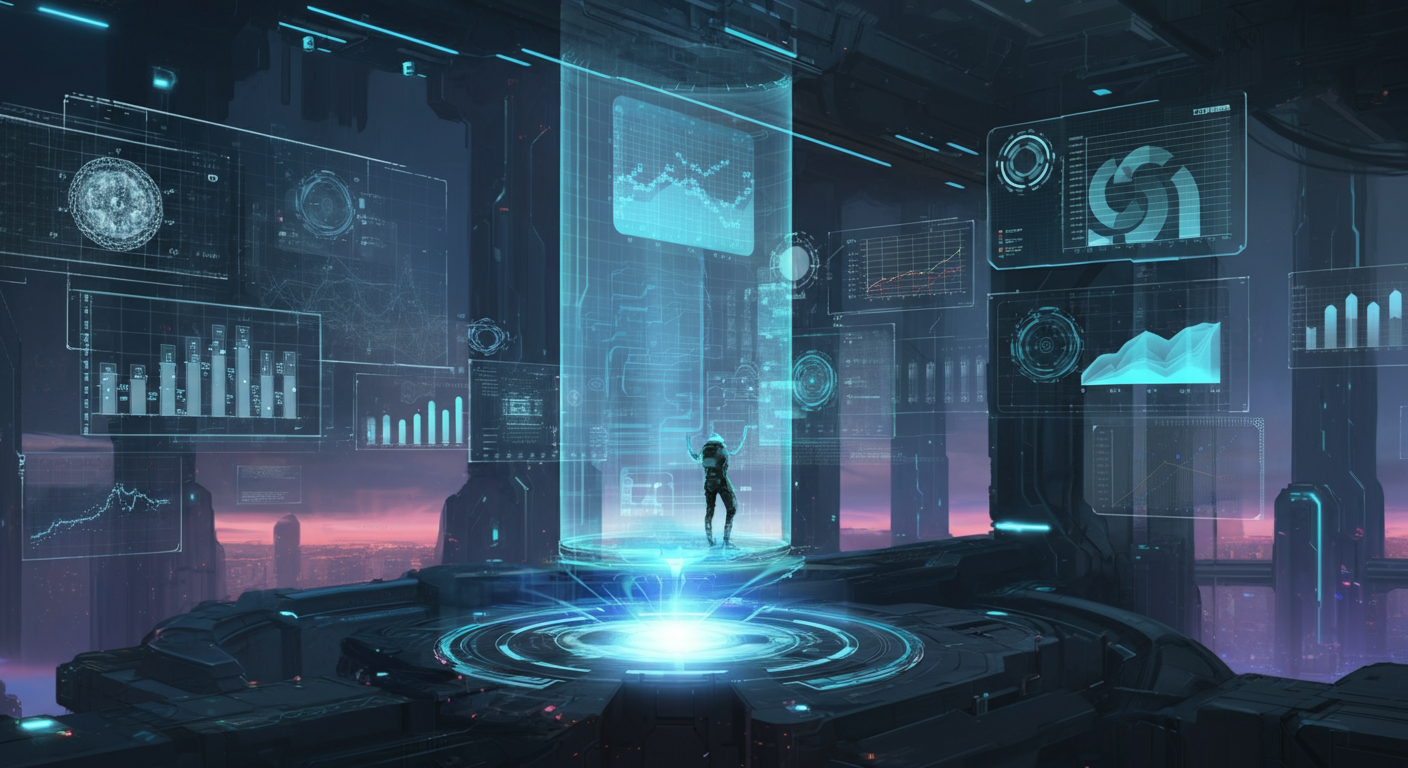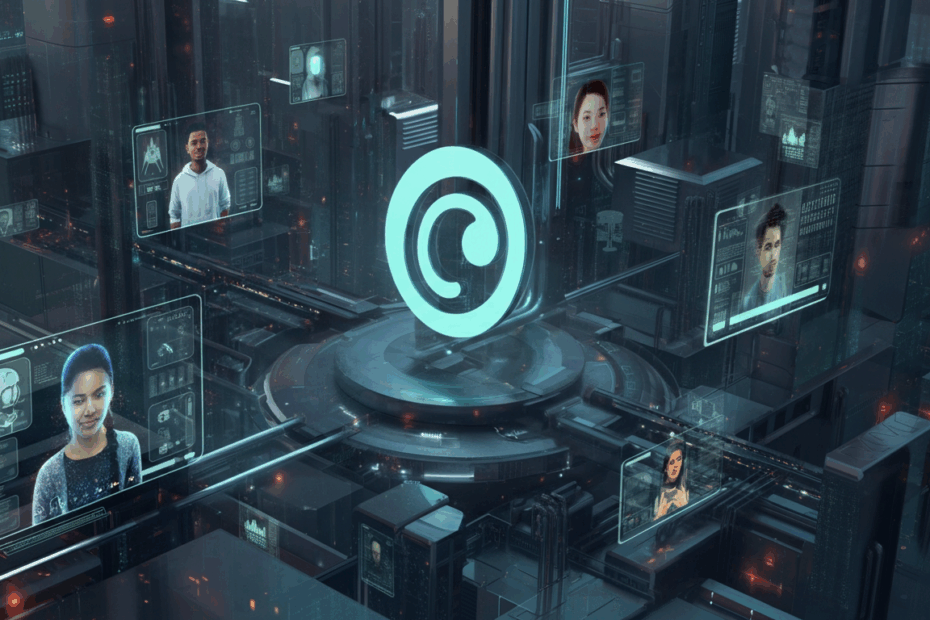Tired of flat screens? Meta’s Metaverse aims to revolutionize connection! Explore the vision, tech, and potential of this immersive future.#Metaverse #VR #Tech
🎧 Listen to the Audio
If you’re short on time, check out the key points in this audio version.
📝 Read the Full Text
If you prefer to read at your own pace, here’s the full explanation below.
Basic Info
John: Hey Lila, let’s dive into Meta’s metaverse strategy. Meta, formerly known as Facebook, rebranded in 2021 to focus on building the metaverse, which is essentially a network of virtual worlds where people can interact, work, and play using avatars. This shift started when Mark Zuckerberg announced the company’s new direction, aiming to move beyond social media into immersive digital experiences.
Lila: That sounds fascinating, John. So, why does this strategy exist? From what I’ve gathered from sources like Cointelegraph, Meta wants to address the limitations of current 2D internet experiences by creating a more connected, 3D virtual space. It aims to solve issues like social isolation in digital interactions by making them feel more lifelike, especially post-pandemic when remote connections became crucial.
John: Exactly. In the past, early milestones included the launch of Oculus VR headsets after acquiring Oculus in 2014, which laid the groundwork. By 2021, they invested heavily, with reports from CoinDesk noting billions poured into Reality Labs. User reactions were mixed; some were excited about virtual reality potential, but others worried about privacy, as seen in early discussions on platforms like X.
Lila: I see. What problems does it aim to solve today? Based on verified info, it’s tackling how we connect online, making education, work, and entertainment more accessible. For instance, in 2022, Meta highlighted mixed reality to blend physical and virtual worlds, solving the disconnect between real life and digital spaces.
John: Looking back, the strategy gained traction with announcements like the Meta Quest devices. Users reacted positively to demos, but there were concerns about centralization threatening decentralized ecosystems, as per a 2021 Cointelegraph article. This positions Meta as a major player aiming for a unified metaverse experience.
Lila: Got it. So, in summary for beginners, Meta’s metaverse strategy is about evolving from flat screens to immersive worlds, starting from hardware acquisitions and evolving through massive investments, with the goal of revolutionizing social technology.
Technology Pillars & Architecture
John: Now, let’s break down the tech behind Meta’s metaverse strategy. At its core, it relies on virtual reality (VR), augmented reality (AR), and mixed reality (MR) technologies. Think of VR as putting you fully into a digital world, like wearing goggles to explore a virtual city, while AR overlays digital elements on the real world, such as seeing virtual furniture in your room via a phone app.
Lila: That analogy helps a lot. In the past, Meta built this on hardware like the Oculus Quest, which evolved into Meta Quest devices. They integrated social features from Facebook, allowing avatar-based interactions. But it’s not deeply blockchain-based; it’s more centralized, though there are nods to Web3 elements in their vision.
John: Currently, the architecture includes Reality Labs’ research into advanced headsets like the Meta Quest Pro, launched in 2022 as per official posts. It uses eye-tracking and face-tracking for more natural interactions, blending MR to let you see the real world while in virtual spaces. No smart contracts here like in decentralized metaverses, but it’s built on proprietary software stacks.
Lila: For beginners, imagine the architecture as a big digital house: the foundation is cloud computing for seamless experiences, walls are the hardware devices, and rooms are apps for work or play. Looking ahead, Meta plans to incorporate more AI, as recent news from Forbes in 2025 mentions pivots to AI-enhanced metaverses.
John: In the past, they focused on VR hardware; currently, it’s about integrating AR glasses and metaverse platforms like Horizon Worlds. The tech evolves with updates, but scalability relies on Meta’s servers, not blockchain L2s. Analogies: It’s like a theme park where Meta owns the rides, unlike decentralized parks where users build them.
Lila: Looking ahead, sources like CoinDesk from 2023 show Meta’s commitment despite losses, planning for enterprise tools. The architecture might include more open elements, but currently, it’s closed-loop with user data central to personalization.
John: To explain further, no oracles or rollups here—it’s not blockchain-centric. Instead, it uses spatial computing for 3D interactions. In the past, basic VR; now, advanced MR; future could see metaverse standards for interoperability.
Lila: Plain English: It’s like upgrading from a 2D map to a 3D globe you can walk inside. The pillars are hardware, software ecosystems, and AI for smarter avatars, evolving from experimental phases to polished products.
Community & Ecosystem

John: The community around Meta’s metaverse is growing, with developers building apps for Horizon Worlds. User growth has been steady, especially with Quest headset sales. Partnerships include Microsoft for work tools, as noted in older Cointelegraph pieces from 2022 about poaching talent.
Lila: Social media sentiment on X is positive from official accounts. For example, a post from Meta in 2022 highlighted mixed reality experiences like virtual fishing in your living room, which garnered over 1,000 likes, showing excitement for fun integrations.
John: Governance is centralized under Meta, not DAO-like. Developer activity is encouraged through SDKs, but it’s not open-source like Web3 projects. Recent trends from 2025 news indicate a pivot to enterprise metaverse, boosting ecosystem partnerships.
Lila: Another X post from Meta in 2022 announced the Meta Quest Pro for professional use, with nearly 1,000 likes, reflecting community interest in work-focused metaverse tools. Sentiment mixes hype with skepticism on centralization.
John: Overall, the ecosystem includes content creators and businesses, with user growth tied to hardware adoption. Social buzz on X from verified accounts emphasizes innovation in connecting people virtually.
Lila: Yes, and with investments like the $50M for responsible innovation in 2022, it shows commitment to inclusive growth, though community calls for more decentralization persist.
Use-Cases & Integrations
John: Use-cases for Meta’s metaverse include social gatherings in virtual spaces like Horizon Worlds, where users attend concerts or meet friends. It’s integrated with Facebook for easy login, but not heavily with NFTs yet—more focused on virtual goods within their ecosystem.
Lila: Gaming is big; think VR titles on Quest. Actual products: Meta Quest Pro for mixed reality work, allowing virtual meetings with avatars. Cross-chain? Not really, as it’s centralized, but they explore Web3 ideas per Davos discussions in 2023 Cointelegraph.
John: Education use-cases involve virtual classrooms. Integrations with Instagram for sharing metaverse moments. No direct blockchain, but potential for enterprise metaverse in business, as per 2025 news on rebuilding with AI and metaverse.
Lila: Live apps include fitness experiences or virtual shopping. For beginners, it’s like a digital mall where you try on virtual clothes. Gaming integrations with titles like Beat Saber show metaverse as an entertainment hub.
John: Looking at metaverse functions, it’s for collaboration, like virtual offices with Microsoft. NFT roles are minimal, but they could expand to digital ownership in future updates.
Lila: Examples: WhatsApp commerce tied to metaverse per recent articles, enabling virtual storefronts. This integrates social media with immersive shopping.
Future Vision & Expansion Potential
John: Meta’s vision is a fully interconnected metaverse where people live parts of their lives digitally. Roadmaps promise AR glasses and AI-driven experiences, as per Zuckerberg’s commitments in CoinDesk 2023.
Lila: Community views it as expansive, with potential for global adoption, but concerns about monopoly. Expansion could include more open standards, per Davos 2023 talks.
John: Looking ahead, it’s about enterprise and AI integration, as in 2025 Forbes pivot. The trajectory is towards ubiquitous virtual reality in daily life.
Lila: Yes, promised features like advanced avatars and seamless worlds. Community on X is optimistic about connective tech.
John: Overall, potential is high for redefining social tech, if they navigate centralization issues.
Risks & Limitations

John: Risks include heavy financial losses, like the $13.7B in 2022 per CoinDesk. Scalability issues with server dependency, not blockchain dispersion.
Lila: Legal concerns: Privacy threats from data collection, as early Cointelegraph articles highlighted centralized metaverse risks to decentralized ecosystems.
John: Security: Potential for hacks in virtual spaces. UX limitations with motion sickness in VR. On X, analysts raise monopoly fears.
Lila: Limitations: Accessibility, as hardware is pricey. Concerns from verified sources on X about over-reliance on Meta’s control.
John: Overall, risks involve regulatory scrutiny and competition from decentralized alternatives.
Expert Commentary
John: Experts on X, like official Meta posts, emphasize innovation. One post from 2022 highlighted research for connecting people, paraphrased as pushing boundaries in mixed reality.
Lila: Another from Meta in 2022 discussed $50M investment in responsible innovation, showing expert focus on privacy and inclusion.
John: Reflecting, this shows proactive addressing of risks. A third paraphrase: Meta’s announcement of Quest Pro as a new way to work, indicating expert views on professional metaverse potential.
Lila: I think it balances hype with responsibility, as per these insights.
Recent Trends & Roadmap
John: In the past, heavy VR focus with Quest launches. Currently, 2025 trends from Forbes show AI and metaverse pivot, rebuilding market cap to $1.3T.
Lila: Looking ahead, enterprise strategy and LLaMA AI integration, per TechCrunch updates.
John: Recent features: WhatsApp commerce in metaverse. Roadmap includes more immersive tools.
Lila: From past losses to current recovery, future expansions in AR.
John: Trends emphasize open-source AI with metaverse, as in recent descriptions.
FAQ

How do I get started with Meta’s metaverse?
John: To onboard, start by getting a Meta Quest headset and creating an account linked to Facebook or Meta. It’s beginner-friendly with tutorials for setting up virtual spaces.
Lila: Explore Horizon Worlds for free experiences. No crypto wallet needed, as it’s centralized.
What tools do I need to use it?
John: Main tools are VR headsets like Quest 2 or Pro, plus a stable internet. Apps are available on PC or mobile for lighter AR experiences.
Lila: Use the Meta app for management. No advanced tech required beyond that.
How can I join the community?
John: Follow Meta on X and join forums like Reddit’s r/metaverse. Attend virtual events in Horizon.
Lila: Engage with developers via Meta’s SDK resources for building.
What wallet do I need?
John: No blockchain wallet; use Meta’s payment system for virtual purchases.
Lila: Future might integrate Web3, but currently, it’s internal.
What are the main use-cases?
John: Socializing, gaming, and work meetings in virtual reality.
Lila: Also education and shopping via mixed reality.
What risks should I be aware of?
John: Privacy issues with data collection and potential for addiction to virtual worlds.
Lila: Financial risks from hardware costs and centralized control vulnerabilities.
Related Links
Final Reflections
John: Exploring Meta (formerly Facebook)’s Metaverse Strategy through real-time insights gave me a deeper appreciation for how Web3 is evolving beyond hype. It’s building real infrastructure.
John: I’ll be watching how Meta (formerly Facebook)’s Metaverse Strategy performs in developer adoption and how the tools it offers evolve with actual use.
Lila: I agree! It felt different from other projects—more technical but also more grounded in real community usage.
Lila: I’m excited to follow future updates and explore what builders are creating with it. Definitely one to watch!
Disclaimer: This article is for informational purposes only. Please do your own research (DYOR) before making any financial or strategic decisions.
